The Potential of Zanthoxylum acanthopodium DC. as Immunomodulators: Formulation, Activity Testing, and Extract Profiling
Abstract
1. Introduction
2. Results and Discussion
2.1. Characterization of Standard Parameters of Andaliman Fruit
2.1.1. FTIR-ATR Testing
2.1.2. Determination of Specific Parameters of Andaliman Fruit Extract
Metal Contamination Level
2.1.3. Phytochemical Screening
2.1.4. Thin Layer Chromatography (TLC) Profile of the Extract
2.1.5. Isolation of Quercetin
TLC Analysis and Isolation of Quercetin
UV-Vis Spectrum
FTIR Spectrum
Mass Spectrum
NMR Spectrum
2.1.6. Analysis of Compound Content Using LC-HRMS
2.1.7. Comparison of Chemical Compound Content in Andaliman Extract
- a.
- Total Phenolic Content
- b.
- Total Flavonoid Content
- c.
- Quercetin Level
2.1.8. Development of Andaliman Extract Soft Capsule
- a.
- Evaluation of Soft Capsule Shell
- b.
- Formulation of Extract Emulsion
- c.
- Encapsulation of Andaliman Extract Soft Capsules
2.1.9. Immunomodulatory Activity Test on Lymphocyte Cells
3. Materials and Methods
3.1. Materials
3.2. Methods
3.2.1. Pharmacognosy Study
- a.
- FTIR-ATR Testing
- b.
- Extract Parameter Testing
- c.
- Phytochemical Screening
- d.
- Thin Layer Chromatography (TLC) Profile of the Extract
- e.
- Isolation of Quercetin
- f.
- Structure Elucidation: Nuclear Magnetic Resonance (NMR) Analysis
3.2.2. Analysis of Compound Content Using LC-HRMS
3.2.3. Analysis of Chemical Compound Content
- a.
- Total Phenol Content
- b.
- Total Flavonoid Content
- c.
- Quercetin Levels
3.2.4. Soft Capsule Development
Incompatibility Study of Extract with Capsule Shell
3.2.5. Immunomodulatory Activity Test on Lymphocyte Cells
Lymphocyte Cell Viability Test on Andaliman Extract
4. Conclusions
Author Contributions
Funding
Institutional Review Board Statement
Informed Consent Statement
Data Availability Statement
Conflicts of Interest
References
- Rosenblum, M.D.; Way, S.S.; Abbas, A.K. Regulatory T cell memory. Nat. Rev. Immunol. 2016, 16, 90–101. [Google Scholar] [CrossRef]
- Negi, J.S.; Bisht, V.K.; Bhandari, A.K.; Singh, P.; Sundriyal, R.C. Chemical constituents and biological activities of the genus Zanthoxylum: A review. Afr. J. Pure Appl. Chem. 2011, 5, 412–416. [Google Scholar]
- Dubey, R.K.; Kumar, R.; Jaya; Dubey, N. K. Evaluation of Eupatorium cannabinum Linn. oil in enhancement of shelf life of mango fruits from fungal rotting. World J. Microbiol. Biotechnol. 2007, 23, 467–473. [Google Scholar] [CrossRef]
- Farida, Y.; Azela, W.; Lestari, M.E.; Pratami, D.K. The quality parameters, total flavonoids determination and antioxidant activity compound of andaliman fruit andaliman fruit (Zanthoxylum acanthopodium dc.) extract. Int. J. Appl. Pharm. 2021, 13, 34–40. [Google Scholar] [CrossRef]
- Sibuea, P. Oksigen Singlet (O2), Ancaman Baru Keamanan Panganan. In Makalah Seminar Sehari Fakultas Pertanian; Universitas Katolik St. Thomas SU: Medan, Indonesia, 2006. [Google Scholar]
- Kristanty, R.E.; Suriawati, J. The Indonesian Zanthoxylum acanthopodium DC.: Chemical And Biological Values. Int. J. PharmTech Res. 2015, 8, 313–321. [Google Scholar]
- Hasairin, A. Etnobotani Tanaman Rempah Dalam Makanan Adat Masyarakat Batak Angkola dan Mandailing; Institut Pertanian Bogor: Bogor, Indonesia, 1994. [Google Scholar]
- Chaerunisaaa, A.Y.; Susilawati, Y.; Muhaimin, M.; Milanda, T.; Hendriani, R.; Subarnas, A. Antibacterial activity and subchronic toxicity of Cassia fistula L. barks in rats. Toxicol. Rep. 2020, 7, 649–657. [Google Scholar] [CrossRef]
- Dewi, M.K.; Muhaimin, M.; Joni, I.M.; Hermanto, F.; Chaerunisaa, A.Y. Fabrication of Phytosome with Enhanced Activity of Sonneratia alba: Formulation Modeling and In Vivo Antimalarial Study. Int. J. Nanomed. 2024, 19, 9411–9435. [Google Scholar] [CrossRef]
- Muhaimin, M.; Lestari, U.; Hirzan, R.; Chaerunisaa, A.Y. The potential of medicinal plants in tuberculosis treatment: Indigenous plants used by the Anak Dalam tribe of Jambi, Indonesia. S. Afr. J. Bot. 2025, 180, 688–709. [Google Scholar] [CrossRef]
- Santangelo, C.; Varì, R.; Scazzocchio, B.; Di Benedetto, R.; Filesi, C.; Masella, R. Polyphenols, intracellular signalling and inflammation. Ann. Ist. Super. Sanita 2007, 43, 394–405. [Google Scholar]
- Magrone, T.; Fontana, S.; Laforgia, F.; Dragone, T.; Jirillo, E.; Passantino, L. Administration of a Polyphenol-Enriched Feed to Farmed Sea Bass (Dicentrarchus labrax L.) Modulates Intestinal and Spleen Immune Responses. Oxid. Med. Cell. Longev. 2016, 2016, 2827567. [Google Scholar] [CrossRef]
- Patel, S.; Vajdy, M. Induction of cellular and molecular immunomodulatory pathways by vitamin A and flavonoids. Expert Opin. Biol. Ther. 2015, 15, 1411–1428. [Google Scholar] [CrossRef] [PubMed]
- Hutapea, D.B.; Susilawati, Y.; Muhaimin, M.; Chaerunisaa, A.Y. Potent bioactivity of Andaliman (Zanthoxylum acanthopodium DC.). Pharmacia 2024, 71, 1–10. [Google Scholar] [CrossRef]
- Agarwal, S.S.; Singh, V.K. Immunomodulators: A Review of Studies on Indian Medicinal Plants and Synthetic Peptides Part I: Medical Plants. Proc. Indian Natl. Sci. Acad. 1999, 65, 179–204. [Google Scholar]
- Pichler, W.J.; Tilch, J. The lymphocyte transformation test in the diagnosis of drug hypersensitivity. Allergy 2004, 59, 809–820. [Google Scholar] [CrossRef]
- Muhaimin, M.; Chaerunisaa, A.Y.; Dewi, M.K.; Khatib, A.; Hazrina, A. The Toxicological Profile of Active Pharmaceutical Ingredients–Containing Nanoparticles: Classification, Mechanistic Pathways, and Health Implications. Pharmaceuticals 2025, 18, 703. [Google Scholar] [CrossRef]
- Grigore, A. Plant Phenolic Compounds as Immunomodulatory Agents. In Phenolic Compounds-Biological Activity; InTech: London, UK, 2017. [Google Scholar] [CrossRef]
- Khairudin, K.; Sukiran, N.A.; Goh, H.H.; Baharum, S.N.; Noor, N.M. Direct discrimination of different plant populations and study on temperature effects by Fourier transform infrared spectroscopy. Metabolomics 2014, 10, 203–211. [Google Scholar] [CrossRef]
- Chen, X.; Keong, C.Y.; Mei, X.; Lan, J. Determination of chemical changes in Isatis indigotica seeds carried after Chinese first spaceship with FTIR and 2D-IR correlation spectroscopy. Spectrochim. Acta-Part A Mol. Biomol. Spectrosc. 2014, 124, 528–534. [Google Scholar] [CrossRef]
- Maryam, S.; Hartono, K.; Widiyawati, I.E. Clove leaf ethanol extract (Syzygium aromaticum L. Merr. and Perr) is formulated as antiseptic liquid soap. J. Phys. Conf. Ser. 2021, 1869, 012003. [Google Scholar] [CrossRef]
- Ismanelly, T.H.; Laila, L. Evaluation of anti-aging and anti-acne effect of andaliman (Zanthoxylum acanthopodium DC.) ethanolic extract peel off gel mask. Asian J. Pharm. Clin. Res. 2018, 11, 90–93. [Google Scholar] [CrossRef]
- Susanti, N.; Situmorang, E.; Fitri, W. Effectiveness of the Antibacterial Activity of n-Hexane Andaliman (Zanthoxylum acanthopodium DC) Extract Against Bacillus subtilis, Salmonella typhi, and Staphylococcus aureus. J. Phys. Conf. Ser. 2020, 1462, 012072. [Google Scholar] [CrossRef]
- Asbur, Y.K. Pemanfaatan Andaliman (Zanthoxylum acanthopodium DC.) sebagai Tanaman Penghasil Minyak Atsiri. J. Kultiv. 2018, 17, 537–543. [Google Scholar]
- Muzafri, A.; Julianti, E.; Rusmarilin, H. The extraction of antimicrobials component of andaliman (Zanthoxylum acanthopodium DC.) and its application on catfish (Pangasius sutchi) fillet. IOP Conf. Ser. Earth Environ. Sci. 2018, 122, 012089. [Google Scholar] [CrossRef]
- Harahap, U.; Hasibuan, P.A.Z.; Sitorus, P.; Arfian, N.; Satria, D. Antimigration activity of an ethylacetate fraction of Zanthoxylum acanthopodium DC. fruits in 4T1 breast cancer cells. Asian Pacific J. Cancer Prev. 2018, 19, 565–569. [Google Scholar] [CrossRef]
- Nieman, D.C.; Henson, D.A.; Davis, J.M.; Murphy, E.A.; Jenkins, D.P.; Gross, S.J.; Carmichael, M.D.; Quindry, J.C.; Dumke, C.L.; Utter, A.C.; et al. Quercetin’s influence on exercise-induced changes in plasma cytokines and muscle and leukocyte cytokine mRNA. J. Appl. Physiol. 2007, 103, 1728–1735. [Google Scholar] [CrossRef]
- Yanti, Y.; Limas, R.W. Chemical profiling of Zanthoxylum acanthopodium essential oil and its antidiabetic activity. Food Res. 2019, 3, 422–427. [Google Scholar] [CrossRef]
- Batubara, M.S.; Sabri, E.; Tanjung, M. Pengaruh Pemberian Ekstrak Etanol Daun Andaliman (Zanthoxylum acanthopodium DC.) terhadap Gambaran Morfologi Ovarium Mencit (Mus musculus L.) Strain DDW. KLOROFIL J. Ilmu Biol. Terap. 2017, 1, 5. [Google Scholar] [CrossRef]
- Santangelo, C.; Varì, R.; Scazzocchio, B.; Filesi, C. Polyphenols, Intracellular Signalling and Inflammation Candida albicans View Project Dietary Curcumin and Health Effects View Project. 2014. Available online: https://www.researchgate.net/publication/5642986 (accessed on 12 June 2025).
- Indonesia’s Ministry of Health. Farmakope Herbal Indonesia Edisi 2; Indonesia’s Ministry of Health: Jakarta, Indonesia, 2017; p. 561.
- Putri, A.I.E.; Ariyanto, H.D. Effect of Hydrophilic- Lipophilic Balance (HLB) Value on the Stability of Cosmetic Lotion Based on Walnut Oil (Canarium indicium L.) Oil-in-Water Emulsion. J. Vocat. Stud. Appl. Res. 2022, 4, 53–60. [Google Scholar] [CrossRef]
- Blainski, A.; Lopes, G.; De Mello, J. Application and Analysis of the Folin Ciocalteu Method for the Determination of the Total Phenolic Content from Limonium brasiliense L. Molecules 2013, 18, 6852–6865. [Google Scholar] [CrossRef]
- Muhaimin, M.; Iskandar, Y.; Hazrina, A.; Hirzan, R.; Khatib, A.; Syahri, W. Antioxidant Activity of Premna serratifolia Linn. Leaf Extracts: A Comprehensive Analysis Using Various Testing Methods. Indones. Food Sci. Technol. J. 2024, 8, 89–99. [Google Scholar] [CrossRef]
- Azizah, D.N.; Kumolowati, E.; Faramayuda, F. PENETAPAN KADAR FLAVONOID METODE AlCl3 PADA EKSTRAK METANOL KULIT BUAH KAKAO (Theobroma cacao L.). Kartika J. Ilm. Farm. 2014, 2, 33–37. [Google Scholar] [CrossRef]
- Ishiyama, M.; Tominaga, H.; Shiga, M.; Sasamoto, K.; Ohkura, Y.; Ueno, K. A Combined Assay of Cell Viability and in Vitro Cytotoxicity with a Highly Water-Soluble Tetrazolium Salt, Neutral Red and Crystal Violet. Biol. Pharm. Bull. 1996, 19, 1518–1520. [Google Scholar] [CrossRef] [PubMed]
- Gusungi, D.E.; Maarisit, W.; Potalangi, N.O. Studi Aktivitas Antioksidan Dan Antikanker Payudara (MCF-7) Ekstrak Etanol Daun Benalu Langsat Dendrophthoe pentandra. Trop. J. Biopharm. 2020, 3, 166–174. [Google Scholar] [CrossRef]
- Jensch, B.E.; Pressinotti, L.N.; Borges, J.C.S.; Da Silva, J.R.M.C. Characterization of macrophage phagocytosis of the tropical fish Prochilodus scrofa (Steindachner, 1881). Aquaculture 2006, 251, 509–515. [Google Scholar] [CrossRef]
- MacIver, N.J.; Jacobs, S.R.; Wieman, H.L.; Wofford, J.A.; Coloff, J.L.; Rathmell, J.C. Glucose metabolism in lymphocytes is a regulated process with significant effects on immune cell function and survival. J. Leukoc. Biol. 2008, 84, 949–957. [Google Scholar] [CrossRef]
- Rosdiana, A.; Hadisaputri, Y.E. Review Artikel: Studi Pustaka Tentang Prosedur Kultur Sel. Farmaka 2016, 14, 236–249. [Google Scholar]
- Swamy, S.M.K.; Tan, B.K.H. Cytotoxic and immunopotentiating effects of ethanolic extract of Nigella sativa L. seeds. J. Ethnopharmacol. 2000, 70, 1–7. [Google Scholar] [CrossRef]
- Da Costa, J.P.; Rodrigues, A.P.D.; Farias, L.H.S.; Frade, P.C.R.; Da Silva, B.J.M.; Nascimento, J.L.M.D.; Silva, E.O. Biological effects of kojic acid on human monocytes in vitro. Biomed. Pharmacother. 2018, 101, 100–106. [Google Scholar] [CrossRef]
- Rienoviar, R.; Setyaningsih, D. Studi Senyawa Aroma Ekstrak Andaliman (Zanthoxylum acanthopodium) dari Beberapa Pelarut Menggunakan Gas Chromatography-Mass Spectra (GC-MS). War. Ind. Has. Pertan. 2018, 35, 85. [Google Scholar] [CrossRef]
- Choong, Y.K.; Sun, S.Q.; Zhou, Q.; Lan, J.; Lee, H.L.; Chen, X.D. Verification of Ganoderma (lingzhi) commercial products by Fourier Transform infrared spectroscopy and two-dimensional IR correlation spectroscopy. J. Mol. Struct. 2014, 1069, 60–72. [Google Scholar] [CrossRef]
- Xu, C.; Jia, X.; Xu, R.; Wang, Y.; Zhou, Q.; Sun, S. Rapid discrimination of Herba Cistanches by multi-step infrared macro-fingerprinting combined with soft independent modeling of class analogy (SiMCA). Spectrochim. Acta-Part A Mol. Biomol. Spectrosc. 2013, 114, 421–431. [Google Scholar] [CrossRef]
- Pralhad, T.; Rajendrakumar, K. Study of freeze-dried quercetin-cyclodextrin binary systems by DSC, FT-IR, X-ray diffraction and SEM analysis. J. Pharm. Biomed. Anal. 2004, 34, 333–339. [Google Scholar] [CrossRef] [PubMed]
- Heneczkowski, M.; Kopacz, M.; Nowak, D.; Kuźniar, A. Infrared spectrum analysis of some flavonoids. Acta Pol. Pharm. 2001, 58, 415–420. [Google Scholar] [PubMed]
- Fardiyah, Q.; Suprapto; Kurniawan, F.; Ersam, T.; Slamet, A.; Suyanta. Preliminary Phytochemical Screening and Fluorescence Characterization of Several Medicinal Plants Extract from East Java Indonesia. IOP Conf. Ser. Mater. Sci. Eng. 2020, 833, 012008. [Google Scholar] [CrossRef]
- Farnsworth, N.R. Biological and Phytochemical Screening of Plants. J. Pharm. Sci. 1966, 55, 225–276. [Google Scholar] [CrossRef]
- Bueno, F.G.; Machareth, M.A.D.; Panizzon, G.P.; Lopes, G.C.; Mello, J.C.P.; Leite-Mello, E.V.S. Development of a UV/VIS Spectrophotometric Method for Analysis of Total Polyphenols from Caesalpinia peltophoroides Benth. Química Nova 2012, 35, 822–826. [Google Scholar] [CrossRef]
- Muhaimin, M.; Chaerunisaa, A.Y.; Hazrina, A. Preparation and evaluation of propranolol HCl and carbamazepine release profiles from poly(ϵ-caprolactone) microparticle blends system. Int. J. Appl. Pharm. 2023, 15, 117–122. [Google Scholar] [CrossRef]
- Dewi, M.K.; Chaerunisaa, A.Y.; Muhaimin, M.; Joni, I.M. Improved Activity of Herbal Medicines through Nanotechnology. Nanomaterials 2022, 12, 4073. [Google Scholar] [CrossRef]
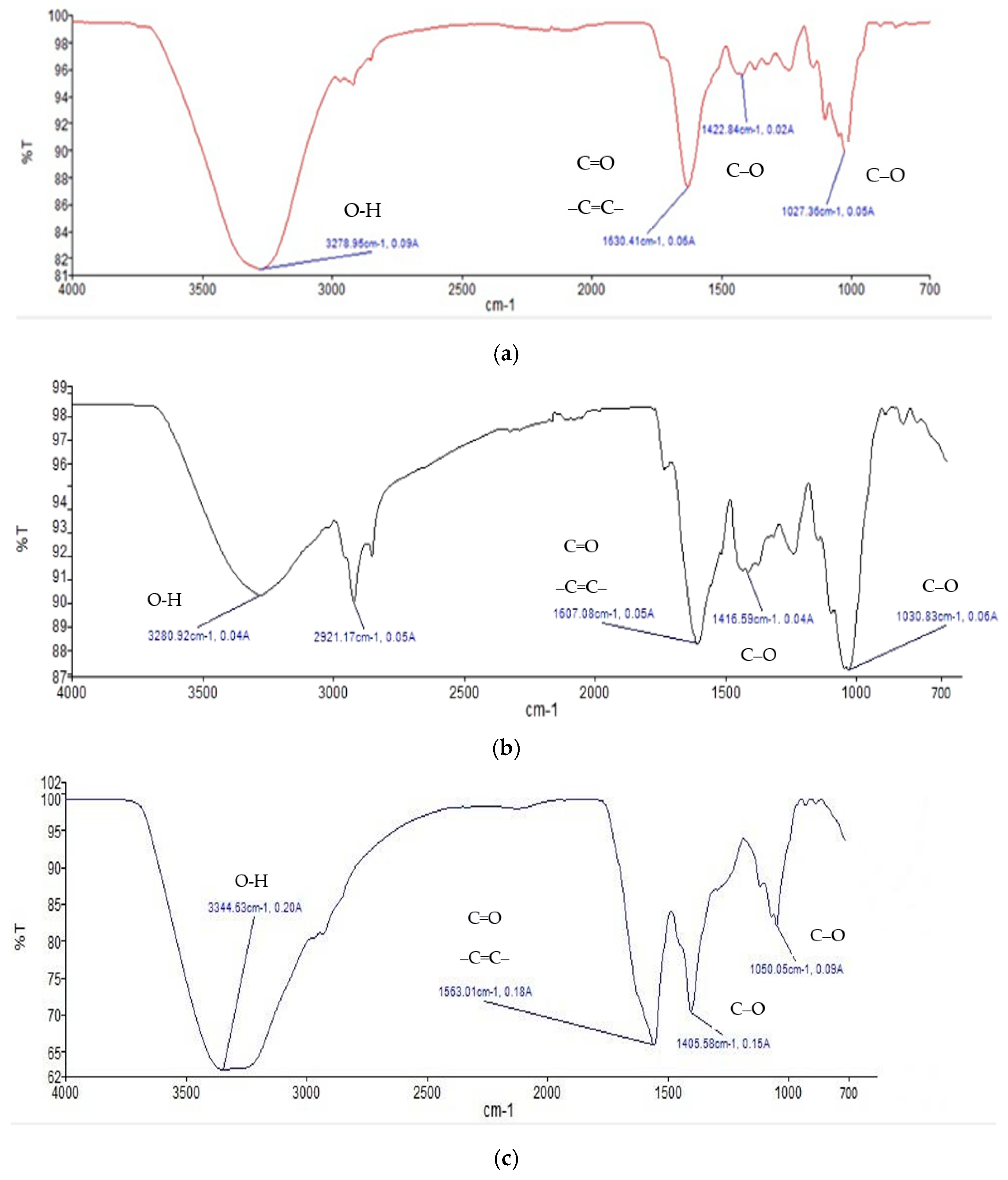
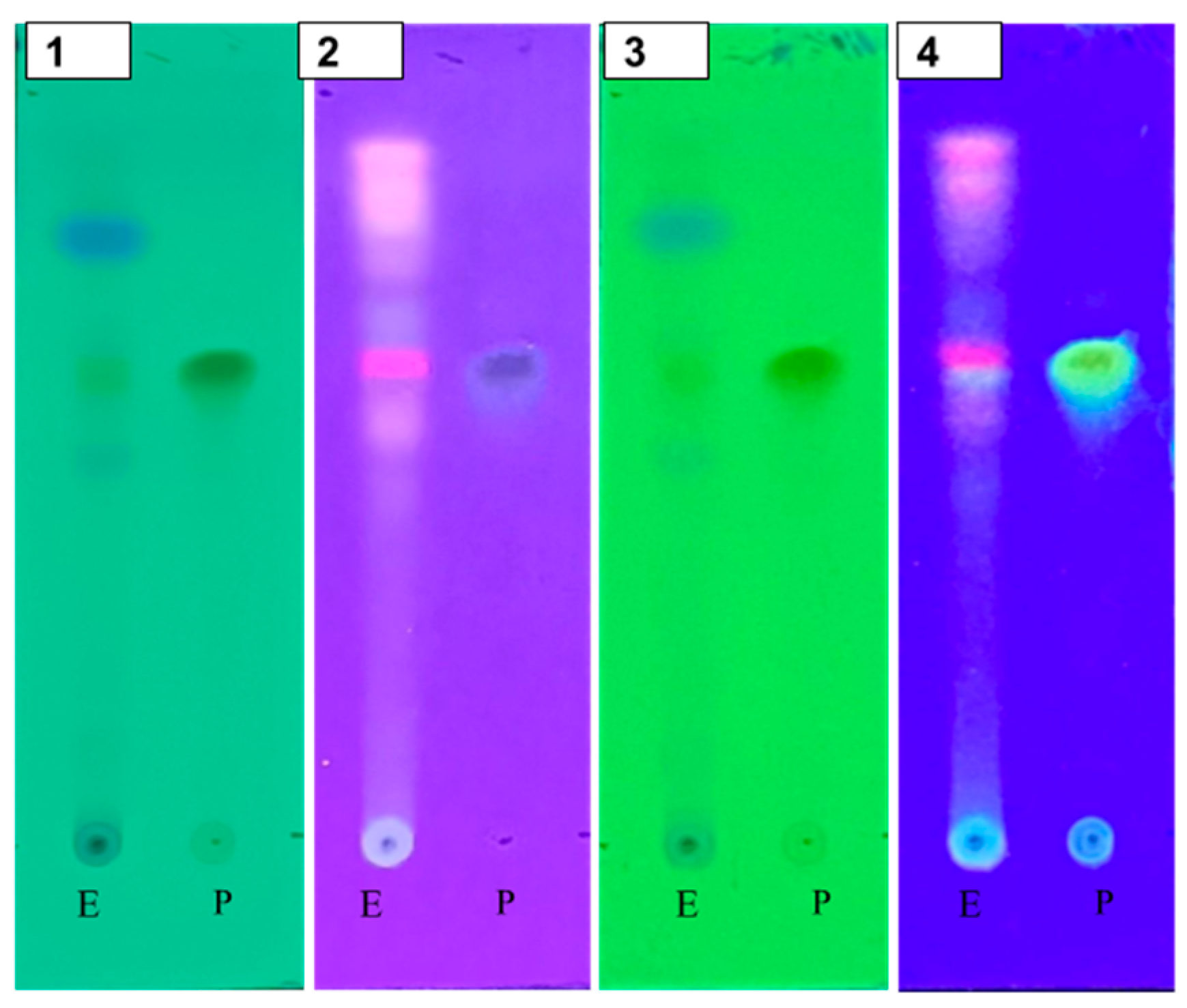
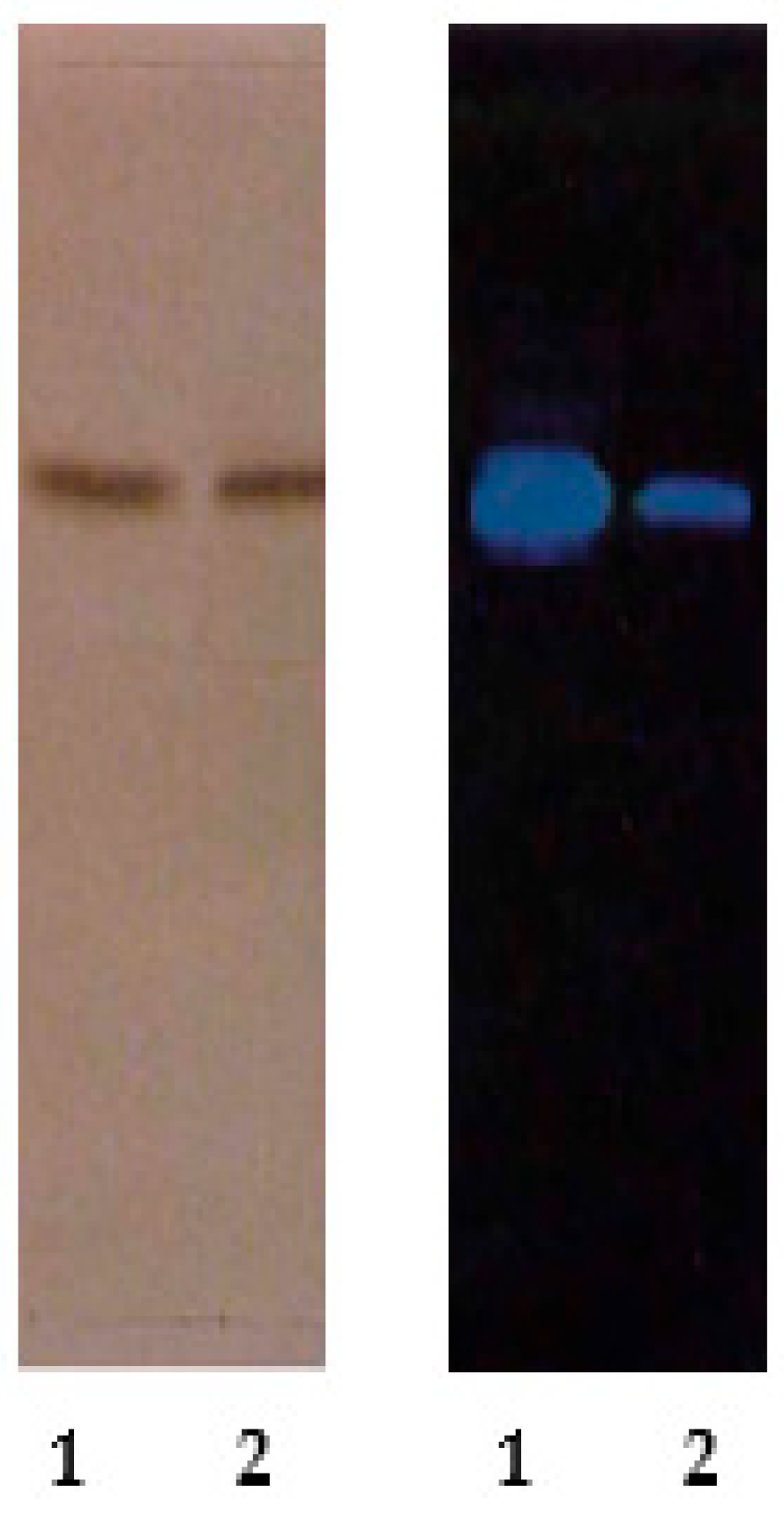
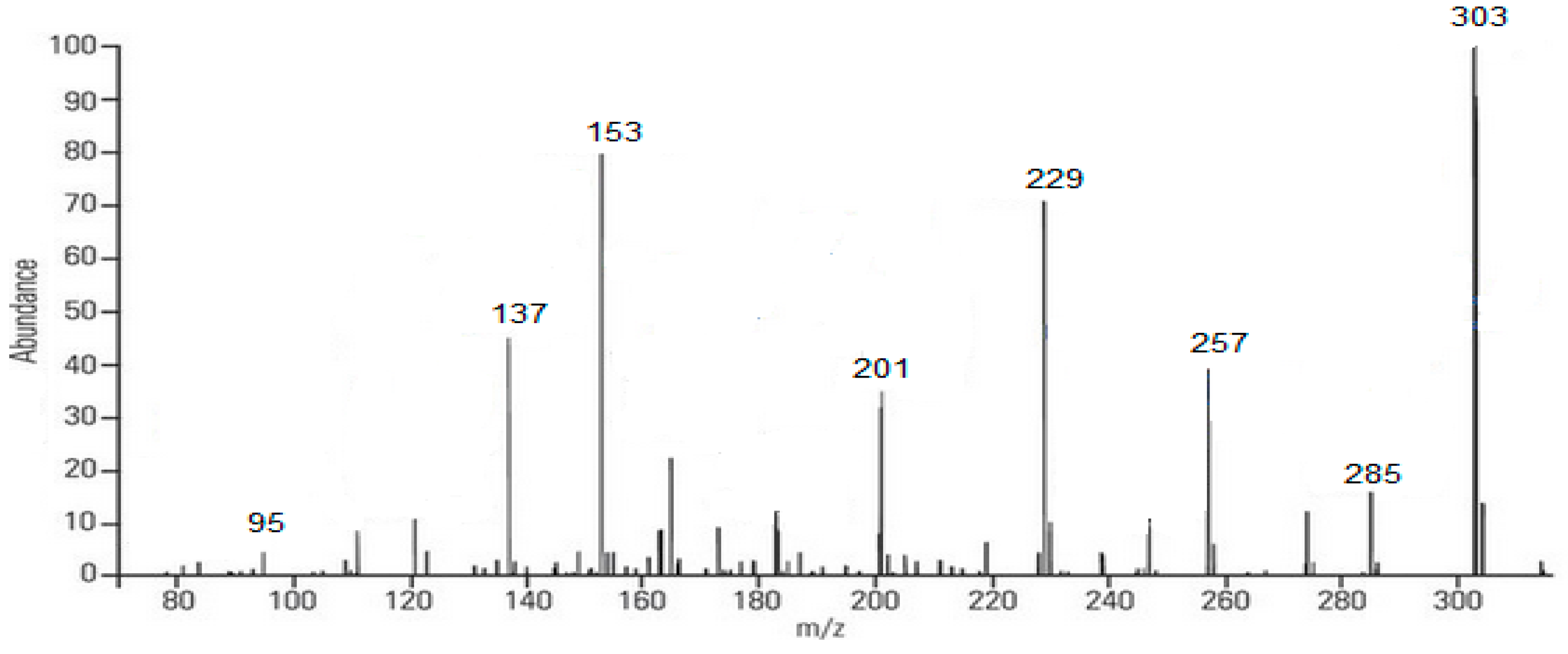
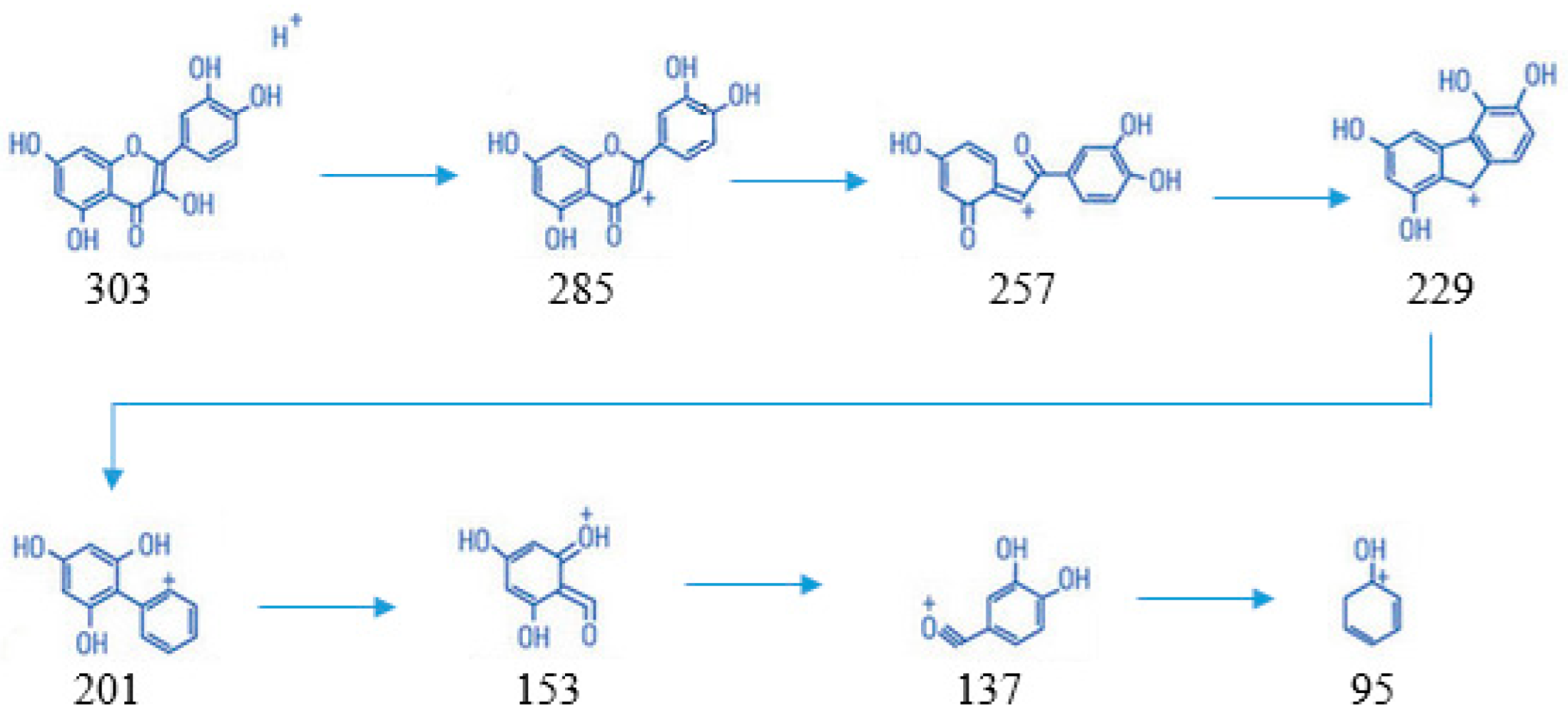
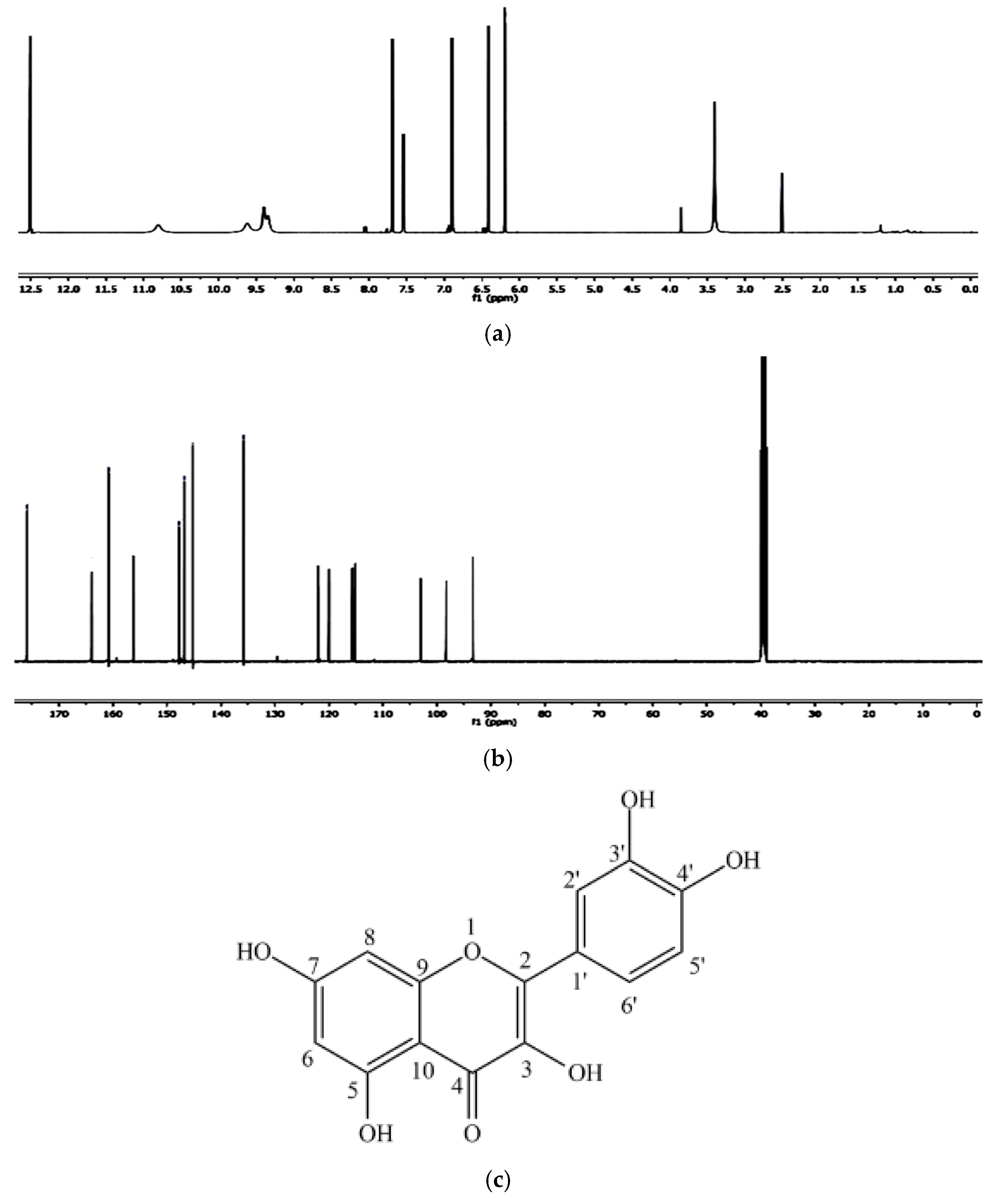


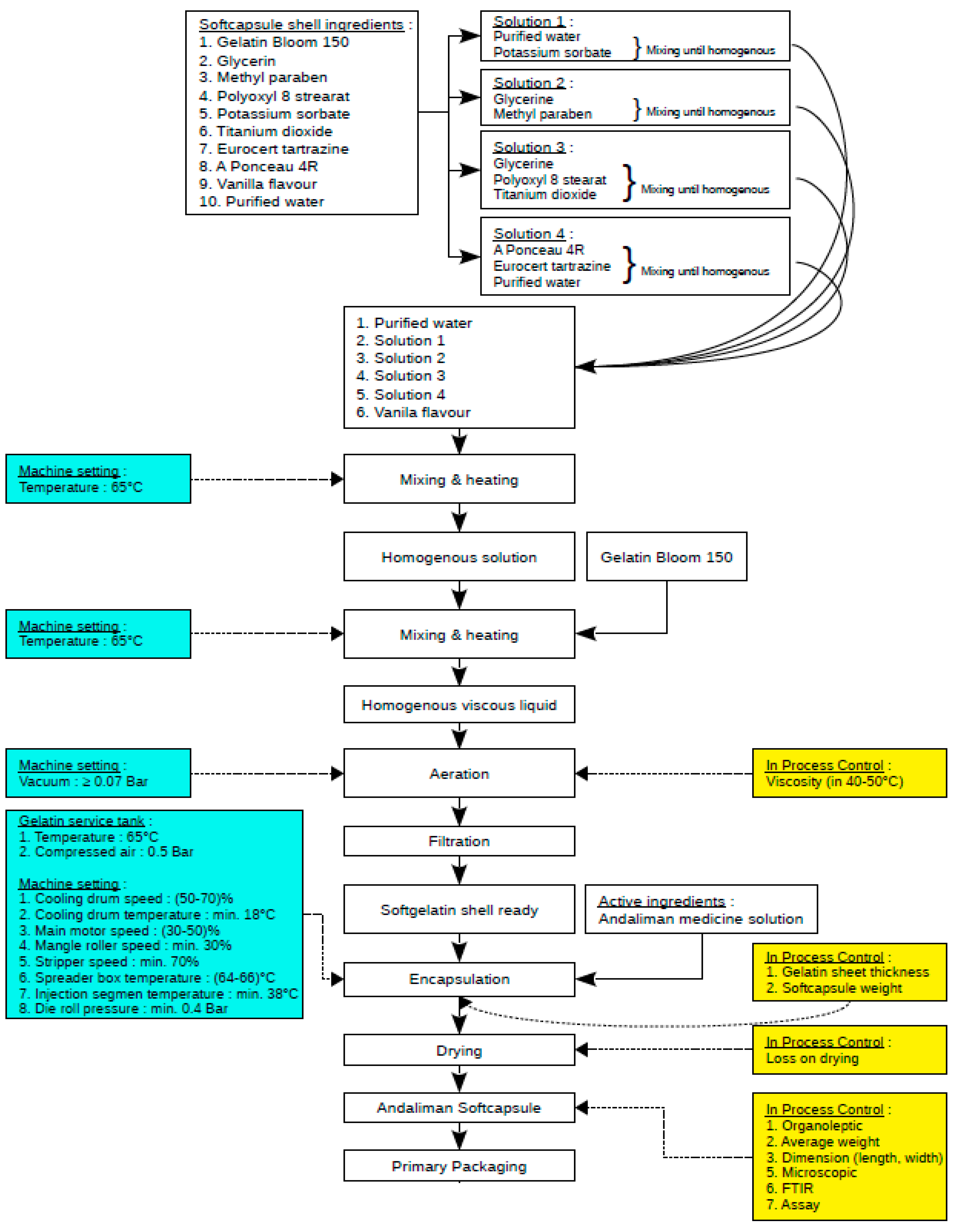
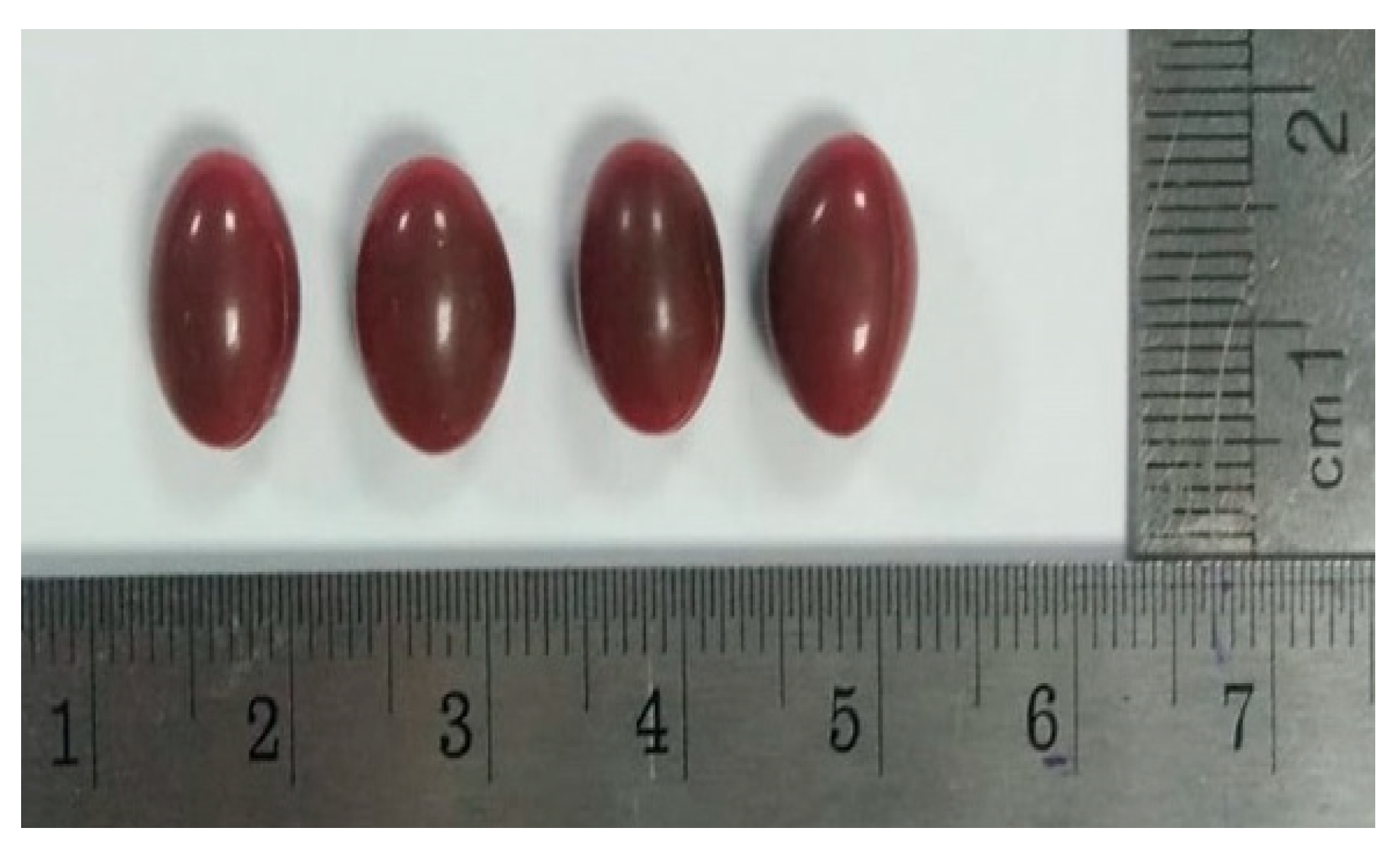
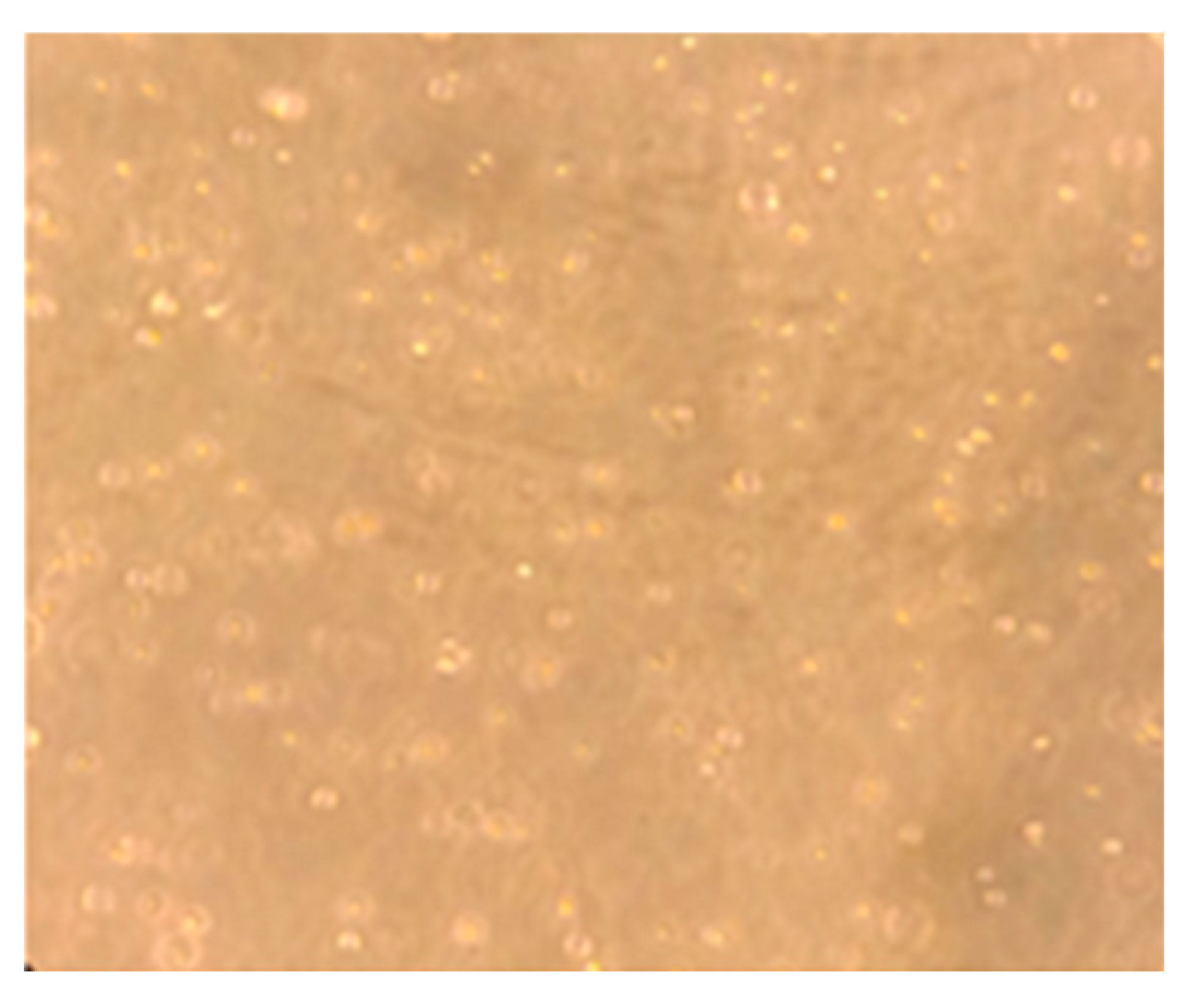

| No. | Detected Wavelength Range (cm−1) | Fresh Andaliman Fruit (cm−1) | Andaliman Simplicia (cm−1) | Andaliman Ethanol Extract (cm−1) | Identified Functional Group | Compound Group |
|---|---|---|---|---|---|---|
| 1. | 3500–3000 | 3278.95 | 3280.92 | 3344.63 | O–H | Indication of polyphenols |
| 2. | 1800–1500 | 1630.41 | 1607.08 | 1563.01 | C=O –C=C– | Indication of flavonoids and terpenoids |
| 3. | 1400–1000 | 1027.36 1422.84 | 1030.83 1416.59 | 1050.05 1405.58 | C–O | Indication of aromatic groups in carbohydrates |
| No. | Parameters | Specification | Result of Ethanol Extract | Reference |
|---|---|---|---|---|
| Specific Parameter | ||||
| 1. | Macroscopic characteristics (i.e., form, size, color, odor, and taste) | |||
| (a) | Form | Thick solution | Thick solution | Internal Specification |
| (b) | Color | Brown to dark brown | Brown to dark brown | Internal Specification |
| (c) | pH (1% in aqueous solution) | 5.0–7.0 | 6.5 | Internal Specification |
| (d) | Total solid (%) | 60–70 | 70 | Internal Specification |
| (e) | Specific gravity (g/mL) | 0.700–1.200 | 0.8100 | Internal Specification |
| 2. | Microbiological contamination | |||
| (a) | Total plate count | ≤104 cfu/g | ˂104 cfu/g (90 cfu/g) | BPOM Regulation No. 32/2019 concerning Safety and Quality Requirements for Traditional Medicines |
| (b) | Total yeast and mold count | ≤103 cfu/g | ˂103 cfu/g (30 cfu/g) | |
| (c) | Escherichia coli | Negative/10 g | Negative | |
| (d) | Salmonella spp. | Negative/10 g | Negative | |
| Nonspecific Parameter | ||||
| 1 | Specific gravity | - | 0.81 g/mL | Internal Specification |
| 2 | Drying loss (w/w) | - | 13.6 ± 0.4% | Internal Specification |
| 3 | Water content | - | 10.45 ± 0.02% | Internal Specification |
| 4 | Total ash content (w/w) | - | 2.82 ± 0.07% | Internal Specification |
| 5 | Acid-insoluble ash content (w/w) | - | 0.55 ± 0.13% | Internal Specification |
| No. | Test Parameters | Level | Unit | Regulatory Limit |
|---|---|---|---|---|
| 1 | Lead (Pb) | 0.001 | mg/kg | 10 mg/kg |
| 2 | Cadmium (Cd) | 0.001 | mg/kg | 0.3 mg/kg |
| 3 | Mercury (Hg) | 0.001 | µg/kg | 0.5 mg/kg |
| 1H NMR Spectrum of Quercetin | 13C NMR Spectrum of Quercetin |
|---|---|
| 6.22 (d, 1H, J = 2.2 Hz, Ar-H) | 94.12; 99.04; 116.01; 116.85; 120.24 (Ar-C) |
| 6.43 (d, 1H, J = 2.2 Hz, Ar-H) | 121.01; 123.14; 136.62 (Ar-C) |
| 6.87 (d, 1H, J = 8.6 Hz, Ar-H) | 146.02 (Ar-C) |
| 7.53 (q, 1H, J = 8.5 Hz, Ar-H) | 147.14 (Ar-C) |
| 7.67 (d, 1H, J = 2.3 Hz, Ar-H) | 148.35 (Ar-C) |
| 9.38 (s, 2H, Ar-OH) | 157.05 (Ar-C) |
| 9.67 (s, 1H, Ar-OH) | 161.54 (Ar-C) |
| 10.91 (s, 1H, Ar-OH) | 164.85 (Ar-C) |
| 12.51 (s, 1H, Ar-OH) | 176.11 (Ar-C=O) |
| No | Compound Name and Structure | Molecular Formula | Molecular Weight | Retention Time (min) | Area Max | Mz Cloud Best Match (%) | Concentration (%) | Activity Immunomodulator |
|---|---|---|---|---|---|---|---|---|
| 1. | 1-Dodecyl-2-pyrrolidinone | C16 H3 O | 254.257 | 13.967 | 14,366,496,185.533 | 83 | 3.91 | - |
| 2. | 6-Methylquinoline | C10 H9 N | 144.080 | 3.356 | 10,327,937,383.0783 | 97.4 | 3.48 | - |
| 3. | N-Methyltryptamine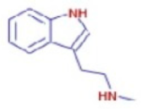 | C11 H14 N2 | 175.122 | 3.36 | 5,861,404,729.80533 | 99.9 | 2.37 | - |
| 4 | Bufotenin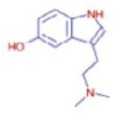 | C12 H16 N2 O | 2015.132 | 1.621 | 5,563,535,938.54227 | 99.8 | 1.52 | - |
| 5 | 3-[(2-phenyl-1H-imidazol-4-yl)methylene]-1,3-dihydro-2H-indol-2-one | C18 H13 N3 O | 288.122 | 10.977 | 4,543,172,895.765 | 98.3 | 1.421 | - |
| 6 | (2E,4E)-N-(2-methylpropyl)dodeca-2,4-dienamide | C16 H29 N O | 252.232 | 13.402 | 3,934,736,043.8591 | 92.6 | 1.07 | Immunomodulator |
| 7 | trans-3-Indoleacrylicacid | C11 H9 N O2 | 188.070 | 2.337 | 3,546,987,932.53118 | 89.4 | 0.97 | Immunomodulator |
| 8 | 4,7,8-trimethoxyfuro[2,3-b]quinoline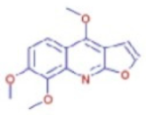 | C14 H13 N O4 | 260.091 | 8.621 | 2,921,177,866.39903 | 99.3 | 0.80 | - |
| 9 | Bis(2-ethylhexyl) Phthalate | C24 H38 O4 | 391.283 | 17.603 | 2,720,019,234.75091 | 99.9 | 0.74 | - |
| 10 | Oleamide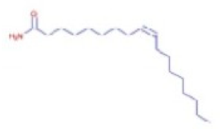 | C18 H35 N O | 282.278 | 15.039 | 2,444,410,257.87868 | 90.6 | 0.67 | - |
| 11 | Bis(3,5,5-trimethylhexyl) phthalate | C26 H42 O4 | 419.314 | 18.203 | 2,107,105,993.16125 | 98.2 | 0.57 | - |
| 12 | Quercetin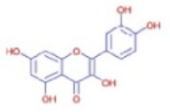 | C15 H10 O7 | 303.049 | 7.698 | 2,106,441,300.66138 | 98.4 | 0.57 | Immunomodulator |
| 13 | Ethylmorphine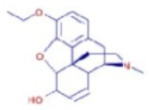 | C19 H23 N O3 | 314.174 | 5.38 | 2,021,898,958.79495 | 82.5 | 0.55 | - |
| 14 | D-(+)-Camphor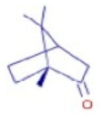 | C10 H16 O | 135.166 | 6.661 | 1,918,589,503.23951 | 84 | 0.52 | - |
| 15 | Methyl isonicotinate | C7 H7 N O2 | 138.054 | 0.939 | 1,695,837,892.86535 | 97 | 0.46 | - |
| 16 | α-Linolenic acid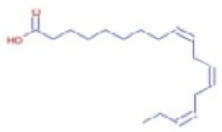 | C18 H30 O2 | 279.231 | 14.638 | 1,185,635,190 | 99.7 | 0.34 | Immunomodulator |
| 17 | L-Isoleucine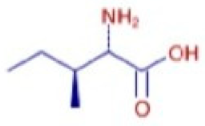 | C6 H13 N O2 | 132,101 | 0.97 | 918,950,817.481148 | 99.9 | 0.26 | Immunomodulator |
| 18 | D-(+)-Pipecolinic acid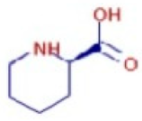 | C6 H11 N O2 | 130.086 | 1.023 | 760,561,951.8 | 97.3 | 0.41 | Immunomodulator |
| 19 | Acetylcholine | C7 H15 N O2 | 146.117 | 0.98 | 532,610,160.461447 | 81.7 | 0.15 | Immunomodulator |
| 20 | Kaempferol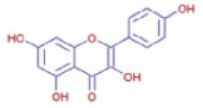 | C15 H10 O6 | 287.054 | 8.62 | 199,010,654.590248 | 98.5 | 0.06 | Immunomodulator |
| 21 | α-Eleostearic acid | C18 H30 O2 | 279.231 | 12.723 | 517,667,258.026672 | 98.5 | 0.14 | Immunomodulator |
| 22 | Isorhamnetin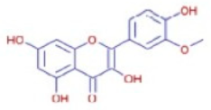 | C16 H12 O7 | 317.064 | 8.808 | 490,460,053.433226 | 98.7 | 0.14 | Immunomodulator |
| No. | Materials | Temperature (°C) | Shell Sheet A | Shell Sheet B | Shell Sheet C |
|---|---|---|---|---|---|
| (a) | Andaliman extract | 30 | (−) | (−) | (−) |
| 40 | (−) | (−) | (−) | ||
| (b) | Propylenglycol | 30 | (+) | (+) | (+) |
| 40 | (+) | (+) | (+) | ||
| (c) | Tween 80 | 30 | (−) | (−) | (−) |
| 40 | (−) | (−) | (−) | ||
| (d) | Gellucire 44/14 | 30 | (−) | (−) | (−) |
| 40 | (−) | (−) | (−) | ||
| (e) | PEG 400 | 30 | (−) | (−) | (−) |
| 40 | (−) | (−) | (−) | ||
| (f) | Montanox 20 ppi | 30 | (−) | (−) | (−) |
| 40 | (−) | (−) | (−) | ||
| (g) | MCT Oil | 30 | (−) | (−) | (−) |
| 40 | (−) | (−) | (−) | ||
| (h) | Sunflower Oil | 30 | (−) | (−) | (−) |
| 40 | (−) | (−) | (−) | ||
| (i) | Soybean Oil | 30 | (−) | (-) | (−) |
| 40 | (−) | (−) | (−) |
| Water phase (Extract) | Andaliman extract (30%) using emulsifier: | |||||
| Oil phase (filler) | ||||||
| PEG 400 (20%) (A) | Tween 80 (20%) (B) | |||||
| SOYBEAN OIL 30% (F1) | Montanox 20 ppi (20%) | 1 | F1.1A | (−) | F1.1B | (−) |
| SUNFLOWER OIL 30% (F2) | Montanox 20 ppi (20%) | F2.1A | (−) | F2.1B | (−) | |
| MCT OIL 30% (F3) | Montanox 20 ppi (20%) | F3.1A | (−) | F3.1B | (−) | |
| Water phase (Extract) | Andaliman extract (30%) using emulsifier: | |||||
| Oil phase (filler) | ||||||
| PEG 400 (10%) (C) | Tween 80 (10%) (D) | |||||
| SOYBEAN OIL 30% (F1) | Montanox 20 ppi (30%) | 2 | F1.2C | (−) | F1.2D | (−) |
| SUNFLOWER OIL 30% (F2) | Montanox 20 ppi (30%) | F2.2C | (−) | F2.2D | (−) | |
| MCT OIL 30% (F3) | Montanox 20 ppi (30%) | F3.2C | (−) | F3.2D | (−) | |
| Water phase (Extract) | Andaliman extract (30%) using emulsifier: | |||||
| Oil phase (filler) | ||||||
| PEG 400 (35%) (E) | Tween 80 (35%) (F) | |||||
| SOYBEAN OIL 30% (F1) | Gellucire 44/14 (5%) | 3 | F1.3E | (−) | F1.3F | (−) |
| SUNFLOWER OIL 30% (F2) | Gellucire 44/14 (5%) | F2.3E | (−) | F2.3F | (−) | |
| MCT OIL 30% (F3) | Gellucire 44/14 (5%) | F3.3E | (+) | F3.3F | (+) | |
| Parameters | Results |
|---|---|
| Color, physical form | Brownish thick liquid |
| density (g/mL) | 1.07 g/ml |
| Viscosity | 927 cP |
| Microbial impurities | |
| <10 colony/g |
| <10 koloni/g |
| Negatif |
| Negatif |
| Chemical content | |
| 1.53% ± 0.58 |
| 0.03% ± 2.72 |
| NO. | Test Parameter | Result |
|---|---|---|
| (a) | Appearance: | |
| Shape | Soft Capsule | |
| Color | Maroon | |
| Size | Oval 5 | |
| Length | 11.50 mm | |
| Width | 7.05 mm | |
| (b) | Average individual weight | 228–235 mg |
| (c) | Leakage | No Leakage |
| (d) | Disintegration time | 15 min |
| (e) | Loss on drying | 4.50% |
| (f) | Chemical compound content | |
| 1.53% | |
| 0.03% | |
| (g) | Microbiological contamination | |
| Total plate count (spec: ≤105 koloni/g) | 7.7 × 102 | |
| Yeast and mold count (spec: ≤103 koloni/g) | 5.9 × 102 | |
| E. coli (spec: negative) | Negative | |
| Enterobacteriaceae (spec: ≤103 koloni/g) | <10 koloni/g | |
| Clostridia (spec: negative) | Negative | |
| Salmonella sp. (spec: negative) | Negative | |
| Staphylococcus aureus (spec: negative) | Negative |
| Survival Rate (%) | ||
|---|---|---|
| Concentration (ppm) | Andaliman Ethanol Extract | Kojic Acid |
| 15.625 | 173.697 ± 0.003 | 144.375 ± 0.041 |
| 31.25 | 174.923 ± 0.013 | 137.891 ± 0.005 |
| 62.5 | 168.457 ± 0.021 | 146.345 ± 0.013 |
| No. | Materials | Soft Capsule Shell Formula (in 50 g) | |||||
|---|---|---|---|---|---|---|---|
| Formula A | Formula B | Formula C | |||||
| Qty (g) | % | Qty (g) | % | Qty (g) | % | ||
| i | Gelatin | 24.85 | 49.7 | 21.15 | 42.3 | 21.56 | 43.1 |
| ii | Glycerin | 6.31 | 12.6 | 5.94 | 11.9 | 0 | 0 |
| iii | Sorbitol | 0 | 0 | 4.86 | 9.7 | 9.53 | 19.1 |
| iv | Purified water | 18.84 | 37.7 | 18.05 | 36.1 | 18.91 | 37.8 |
Disclaimer/Publisher’s Note: The statements, opinions and data contained in all publications are solely those of the individual author(s) and contributor(s) and not of MDPI and/or the editor(s). MDPI and/or the editor(s) disclaim responsibility for any injury to people or property resulting from any ideas, methods, instructions or products referred to in the content. |
© 2025 by the authors. Licensee MDPI, Basel, Switzerland. This article is an open access article distributed under the terms and conditions of the Creative Commons Attribution (CC BY) license (https://creativecommons.org/licenses/by/4.0/).
Share and Cite
Hutapea, D.B.; Susilawati, Y.; Muhaimin, M.; Amalia, R.; Mulyani, A.T.; Chaerunisaa, A.Y. The Potential of Zanthoxylum acanthopodium DC. as Immunomodulators: Formulation, Activity Testing, and Extract Profiling. Pharmaceuticals 2025, 18, 1001. https://doi.org/10.3390/ph18071001
Hutapea DB, Susilawati Y, Muhaimin M, Amalia R, Mulyani AT, Chaerunisaa AY. The Potential of Zanthoxylum acanthopodium DC. as Immunomodulators: Formulation, Activity Testing, and Extract Profiling. Pharmaceuticals. 2025; 18(7):1001. https://doi.org/10.3390/ph18071001
Chicago/Turabian StyleHutapea, Damaris Br., Yasmiwar Susilawati, Muhaimin Muhaimin, Riezki Amalia, Aisyah Tri Mulyani, and Anis Yohana Chaerunisaa. 2025. "The Potential of Zanthoxylum acanthopodium DC. as Immunomodulators: Formulation, Activity Testing, and Extract Profiling" Pharmaceuticals 18, no. 7: 1001. https://doi.org/10.3390/ph18071001
APA StyleHutapea, D. B., Susilawati, Y., Muhaimin, M., Amalia, R., Mulyani, A. T., & Chaerunisaa, A. Y. (2025). The Potential of Zanthoxylum acanthopodium DC. as Immunomodulators: Formulation, Activity Testing, and Extract Profiling. Pharmaceuticals, 18(7), 1001. https://doi.org/10.3390/ph18071001






